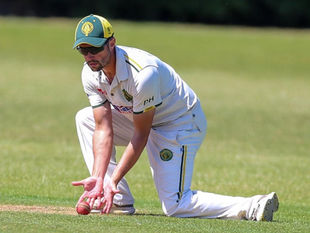
Strong vs Soft Hands: How to Catch Rockets
Sep 1, 2024
3 min read
1
120
0
Strong vs Soft Hands: How to Catch Rockets
When it comes to catching in cricket, few debates are as persistent – or misunderstood – as the discussion around “soft hands” vs “strong hands.” Is one better than the other? Or have we simply been using the wrong language to explain what elite fielders are really doing?
In this blog, we explore the physics, the biomechanics, and the coaching language that can help your players go from catching basics to confidently snatching 90mph rockets out of the air.
The Modern Game: High-Speed Fielding
With bat exit speeds now reaching 90–95mph, cricket balls are flying faster and harder than ever before. Enhanced bat technology, explosive power hitting, and crossover athleticism from other sports have created a game where fielders must evolve rapidly – or get left behind.
The margin for error is razor thin. And when milliseconds matter, clarity in coaching becomes vital.
The Problem with “Soft Hands”
At the grassroots level, fielders are often told to "use soft hands" when catching. The phrase is well-meaning, passed down from coach to player for generations – but it’s not the full story.
In the modern game, where white-ball cricket has transformed techniques across all departments, we must reassess whether the term “soft hands” still serves our players.
Too often, the phrase encourages passivity in the hands and overcompensation in the arms and shoulders, leading to missed catches or, worse, injury.
The Misconception Around “Hard Hands”
The supposed opposite of soft hands – “hard hands” – is equally misleading. It implies stiffness, tension, and a lack of give. When fielders tense up and “snatch” at the ball, they’re not absorbing impact – they’re creating it.
This reactionary force – something Sir Isaac Newton might call equal and opposite – can easily cause the ball to rebound or burst through the hands.
So, if soft is too passive, and hard is too rigid, what’s the solution?
Enter: Strong Hands + Soft Body
We propose a shift in terminology:“Strong hands, soft body.”
This modern approach acknowledges the importance of coordination in elite catching. Yes, the hands must be strong enough to control the ball – but the rest of the body must stay relaxed, responsive, and mobile to absorb energy and remain balanced.
Strong Hands in Action
Imagine a fielder on the boundary, bracing to take a high catch.
Now picture this:
Elbows slightly bent
Shoulders relaxed
Knees flexed in a stable lunge
Core engaged for balance
Head still and eyes tracking the ball
All of these elements create the perfect environment for the hands to do their job. Strong hands don’t mean stiff hands – they mean controlled, prepared, and responsive hands, backed by a soft, coordinated body ready to manage the incoming force.
Coaching Cues That Work
To reinforce these concepts in training, use simple verbal cues that connect movement and mindset:
“Get into a lunge”
“Move around the ball”
“Take it late”
“Relax everything except your hands”
These prompts help athletes self-organise their bodies, allowing them to focus on the timing and sequence needed for a clean catch.
Inner Circle Adjustments
When fielding in close – within the ring – catching becomes even more reactionary. A flatter, harder ball gives the fielder less time to prepare, increasing the risk of injury or error if the hands are too soft or the body too rigid.
In this scenario, keeping the body dynamic and flexible is essential. Movement around the ball is fluid. The sequence – from footwork, to posture, to hand placement – needs to be well-rehearsed and automatic.The hands are merely the final link in a chain of well-coordinated movements.
Developing Strong-Handed Fielders
Want to build confident, capable catchers? Focus on scaffolded progressions that develop body awareness, movement mechanics, and spatial coordination.
Use drills and tools that:
Encourage whole-body movement
Promote relaxation and balance
Help players “feel” their way through catches rather than overthink
Final Thoughts
Catching rockets is about more than reflexes or bravery – it’s about control, proper terminology, and effective coaching.
So next time you're out on the field and your player lines up for a booming catch, ditch the old clichés. Instead, remind them: “Strong hands, soft body.”
That’s how you catch rockets.






